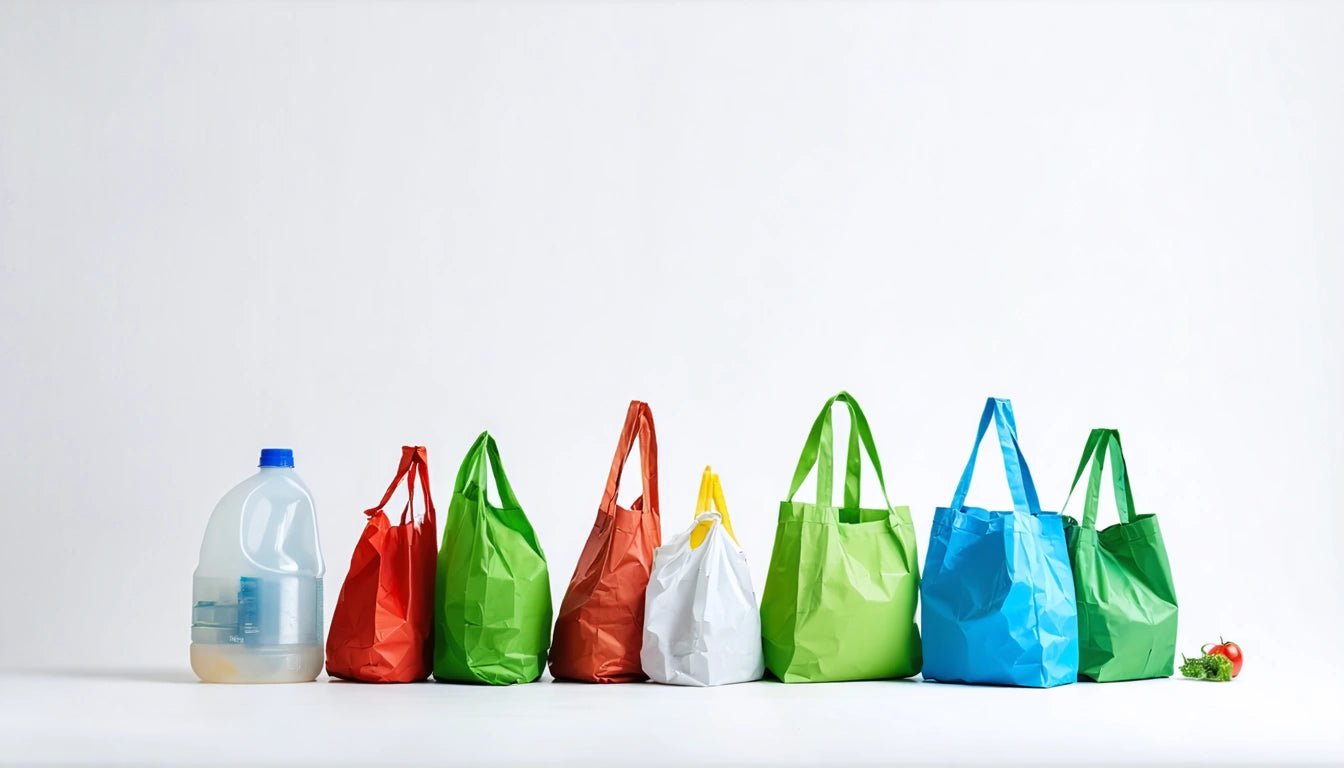Table of Contents
Understanding the Capacity of Grocery and Shopping Bags in Gallons
When planning shopping trips or organizing storage, knowing how many gallons a grocery bag or shopping bag can hold provides valuable practical information. This guide explores the typical capacity of different bag types, offering useful conversions and real-world applications to help you maximize efficiency.
Standard Capacity Measurements of Grocery Bags
The average plastic grocery bag holds approximately 1/6 to 1/5 of a gallon (about 0.75 to 1 liter) when filled to a comfortable carrying capacity. However, the actual volume can vary significantly depending on the bag's design, material strength, and how items are packed.
Standard grocery bags come in several common sizes:
- Small plastic bags: 0.125-0.15 gallons (0.5-0.6 liters)
- Standard plastic grocery bags: 0.2-0.3 gallons (0.75-1.2 liters)
- Large plastic shopping bags: 0.5-0.75 gallons (2-3 liters)
- Paper grocery bags: 0.75-1 gallon (3-4 liters)
While these measurements represent typical capacities, the practical volume depends on the items being carried and how they're arranged. For instance, when shopping for groceries that include items like gallon containers of milk, you'll need to account for both weight and volume constraints.
Plastic vs. Paper Bag Capacity Comparison
Paper and plastic grocery bags differ significantly in their capacity and structural integrity. A standard paper grocery bag typically holds about 0.75-1 gallon (3-4 liters), roughly equivalent to three standard plastic grocery bags.
The comparison between paper and plastic bags extends beyond just capacity. Paper bags offer better structural integrity for standing upright and carrying heavier items, while plastic bags provide flexibility and water resistance.
Capacity by Bag Type:
Paper grocery bags with handles: These typically hold approximately 1 gallon (3.8 liters) and can support 10-14 pounds of groceries.
Standard T-shirt style plastic bags: These generally hold about 0.2-0.3 gallons (0.75-1.2 liters) and support 5-7 pounds when properly packed.
When organizing supplies for events or packaging products, many businesses use specialized packaging solutions similar to those offered by wholesale packaging suppliers who provide consistent sizing for efficient storage and transport.
Reusable Bag Capacity and Advantages
Reusable shopping bags typically offer significantly greater capacity than single-use options. Most standard reusable bags hold between 1-2.5 gallons (4-9.5 liters), with reinforced options capable of carrying even more.
The advantages of reusable grocery and shopping bags extend beyond environmental benefits:
- Higher capacity (often 2-3 times that of standard plastic bags)
- Greater weight tolerance (typically 20-40 pounds)
- Better durability for repeated use
- Improved organization with structured sides
- Reduced risk of tearing or breaking during transport
Many reusable bags are designed with flat bottoms and reinforced handles, allowing them to hold significantly more volume while maintaining structural integrity.
Practical Applications of Knowing Bag Capacity
Understanding how many gallons a grocery bag holds has numerous practical applications:
Meal Planning and Shopping
When planning weekly groceries, knowing your bags' capacity helps estimate how many you'll need. A family of four typically requires groceries that fill 4-5 gallons of space weekly, translating to about 4-5 paper bags or 12-15 plastic bags.
Storage Solutions
Grocery bags can serve as temporary storage containers. Understanding their volume helps when organizing items like:
- Recyclables (a standard paper bag holds about 0.75 gallons of crushed cans)
- Garden supplies (soil, mulch, etc.)
- Donation items (clothing, books, etc.)
For those needing more substantial storage, empty gallon jugs provide a convenient alternative with precise volume measurement.
Volume Conversion Guidelines for Shopping Bags
When converting between different volume measurements for shopping bags, these guidelines can help:
- 1 gallon = approximately 3.8 liters
- 1 gallon = 128 fluid ounces
- 1 gallon = 16 cups
- 1 standard paper grocery bag ≈ 0.75-1 gallon
- 1 standard plastic grocery bag ≈ 0.2-0.3 gallons
- 1 large reusable shopping bag ≈ 1.5-2.5 gallons
For more precise measurements, volume conversion resources can help translate between different units like liters, milliliters, and ounces.
Capacity-Maximizing Tips for Everyday Shopping
To get the most out of your grocery and shopping bags:
- Pack heavier items at the bottom: This creates a stable base and prevents crushing lighter items.
- Use the corners: The corners of paper bags provide additional space often overlooked.
- Distribute weight evenly: Balanced bags are easier to carry and less likely to tear.
- Pack similar items together: Group frozen foods, produce, and boxed items for efficient organization.
- Consider item shapes: Place boxes and rectangular items along the sides to maximize central space.
Understanding volume measurements like weight-to-volume conversions can also help when packing items of various densities.
By understanding the capacity of different grocery and shopping bags in gallons, you can better plan shopping trips, organize storage, and make environmentally conscious choices about the types of bags you use. Whether you're carrying groceries, organizing donations, or storing items, knowing the volume your bags can hold helps maximize efficiency and convenience in everyday tasks.



















